Are you using social messaging to provide customer care? If so, you need to make sure you're tracking the right metrics. In this article, we'll share ten metrics you should track if you're using social messaging for customer care. By monitoring these metrics, you'll see your customer care strategy's effectiveness and make necessary changes to improve it.
Customer Satisfaction (CSAT)
CSAT checks how satisfied customers are with the service they receive. A high CSAT score means that customers are happy with their service and will likely use the messaging service again. A low CSAT score means that customers are unhappy with their service and are less likely to use the messaging service again. Monitoring CSAT is essential because it can help you identify areas where your customer care team needs improvement. If you see a low CSAT score, you can take steps to improve the quality of your customer care services. Conversely, if you see a high CSAT score, you can continue doing what you're doing to keep your customers happy.

Customer Effort Score (CES)
Customer Effort Score (CES) is a metric that measures how much effort a customer has to put forth to communicate with your company and resolve their issue. This metric can track the effectiveness of your social messaging customer care strategy. To calculate CES, you will need to survey your customers and ask them to rate their level of satisfaction with the care they received on a scale from 1-5. The scores are then totaled and divided by the number of respondents to get the CES score.
A CES score of 4 or 5 indicates that your social messaging customer care strategy is effective and that customers are satisfied with their care. A CES score of 3 indicates that your system is somewhat effective and has room for improvement. A CES score of 2 or below means that your system is not effective and that customers are not satisfied with the care they received.
Net Promoter Score (NPS)
Net Promoter Score (NPS) is a metric that measures customer satisfaction. It is calculated by inquiring about customers and how likely they are to recommend a product or service to a friend. NPS can track the success of social messaging for customer care.
Customer Churn
Customer churn is the sum of customers who stop using your product or service within a certain period. There are different ways to calculate customer churn rates. The most common method is to take the number of customers who cancel their subscription or stop using your service for a certain period and divide it by the total number of customers you had at the beginning.
Another way to calculate customer churn rate is to take the number of customers who cancel their subscription or stop using your service within a certain period and divide it by the average number of customers you had during that period.
First Response Time
This is the amount of time it takes for you to respond to a customer's initial message. Ideally, it would assist if you aimed to respond to customers within one hour. However, depending on the nature of your business and the volume of messages you receive, this may not always be possible. In any case, tracking your first response time will give you a good idea of how quickly you can respond to customer inquiries.
Overall, tracking first response time and message resolution time are essential metrics to track if you're using social messaging for customer care. By checking these metrics, you can get a good idea of how quickly and efficiently you can respond to customer inquiries.
Overall Resolution Rate
The overall resolution rate is one of the most important metrics to track if you're using social messaging for customer care. This metric shows how many customer inquiries were successfully resolved through social messaging. A high-resolution rate indicates that your customer care team is excellently responding to questions and resolving issues. A low-resolution rate may suggest that your team needs more training or that your process needs to be improved.
To calculate the overall resolution rate, divide the number of inquiries successfully resolved by the total number of questions received. For example, if your team received 100 inquiries and could decide on 80 of them, your overall resolution rate would be 80%.
First Contact Resolution Rate
This rate is the percentage of customer inquiries resolved on the first contact. This metric is important to track if you're using social messaging for customer care because it shows how impactful your customer service team is at resolving issues. This metric is critical to track because it shows how effectively your customer service team resolves issues. A high first contact resolution rate indicates that your team is excellently addressing customer concerns. A low first contact resolution rate suggests that there may be some improvements needed in your customer service process.

Customer Ticket Request Volume
This will indicate how many customers use social messaging to contact your company. It will also help you to gauge the effectiveness of your customer care team in handling these requests. It's also essential to track the average response time for customer ticket requests. This metric will show how quickly your team can respond to customer inquiries. The faster your team responds, the better the customer experience. Finally, tracking the resolution rate for customer ticket requests is also essential. It will provide an idea of how effectively your team resolves customer issues. A high-resolution rate indicates that your team is doing a good job resolving customer issues.
Average Ticket Handling Time
This metric indicates the average time it takes for your team to respond to and resolve customer service inquiries. This is important to track because it can help you identify areas where your team may need more training or support.






















.png)



.svg)




